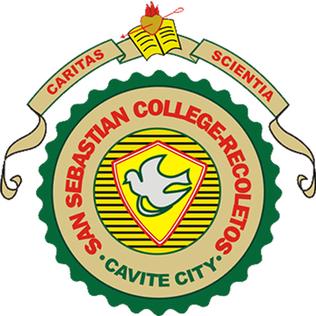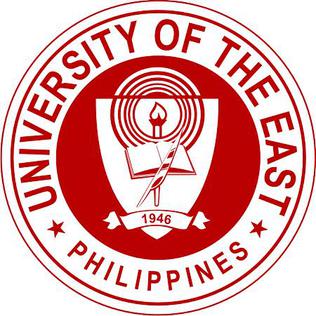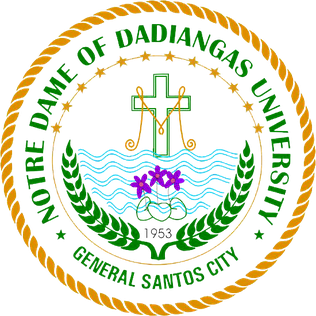
La Salle Green Hills ("LSGH") is a private Catholic school run by the Philippine District of the Institute of the Brothers of the Christian Schools in Ortigas Avenue, Mandaluyong, Metro Manila, Philippines. It was established in 1959 by the De La Salle Brothers led by Brother H. Gabriel Connon, FSC primarily to provide more slots to students wishing to avail of the then very popular De La Salle primary education offered in Taft Avenue, Manila.

San Sebastian College – Recoletos de Cavite, commonly known by its nickname Bastê-Cavite, is a Roman Catholic school and college located in Cavite City in the Philippines. It was founded in 1966 as an all-boys institution, but became co-educational in 1986. In addition to the college and the Graduate School, it has pre-school, grade school, junior high school and senior high school divisions.

La Salle Academy is a private Catholic La Sallian basic education institution run by the Philippine District of the De La Salle Brothers in Iligan City, Lanao del Norte, Philippines. It was founded in 1958. It is the first of the third generation of La Salle schools founded by the De La Salle Brothers in the country, namely: La Salle Green Hills in Mandaluyong (1959), Saint Joseph School-La Salle in Bacolod (1960), and De La Salle Lipa in Lipa City (1962).

The University of the East Caloocan is a private higher education institution in Caloocan, Philippines. It is one of the three campuses of the University of the East system. It is an autonomous unit headed by a chancellor, with the College of Business Administration, Arts and Sciences, Engineering, and Fine Arts. UE Caloocan is called Caloocan Campus to distinguish it from the Manila Campus on C.M. Recto Avenue.

Notre Dame of Marbel University also known by its acronym NDMU) is a private Catholic educational institution run by the Marist Brothers in Koronadal City, South Cotabato, Philippines. It was founded in 1945 and offers pre-school, elementary, high school, college and postgraduate courses. It is the first Marist university in the Philippines since 1992, and it houses one of largest library in Mindanao, known as NDMU Library. NDMU is the only university in Koronadal City and is a member of the Notre Dame Educational Association, a group of Notre Dame Schools in the Philippines under the patronage of the Blessed Virgin Mary, also the Patroness of the University.

The Notre Dame of Dadiangas University (NDDU), also known as Notre Dame, is a private Catholic co-educational basic and higher education institution run by the Marist Brothers or FMS in General Santos City, South Cotabato, Philippines. It was founded in 1953 and offers undergraduate and graduate courses as well as primary and secondary education. Furthermore, it offers a broad spectrum of academic programs through its colleges. It consists of three campuses in General Santos — the main campus along Marist Avenue, the Lagao Campus where the Notre Dame of Dadiangas University-Integrated Basic Education Department (NDDU-IBED) is located and the Espina Campus. Today, NDDU is the only private university in the city of General Santos.

Marist School is a Catholic school located in Marikina, Metro Manila, Philippines established by the Marist Brothers in 1964. The school currently holds a level III accreditation from PAASCU and was considered to be the largest educational institution for boys in Marikina until it shifted to be a co-educational school in 2021. This was the second school founded by the Marist Brothers in the Philippines; the first one was the Notre Dame of Dadiangas University in General Santos City.

Philippine Cultural College is a Chinese Filipino school with three campuses located in Manila, Caloocan and Quezon City, Metro Manila, Philippines, established on June 27, 1923 by the Philippine Chinese Educational Association. PCC is the oldest Chinese Filipino secondary school in the Philippines. It is a non-stock, non-profit, and non-sectarian co-educational education institution offering pre-school, and has a Level II re-accredited status from the Philippine Accrediting Association of Schools, Colleges and Universities (PAASCU) for its grade school and high school. Its programs emphasize in the English, Filipino, and Mandarin Chinese languages, Mathematics, Science, and Information Technology.

St. Mary's College of Meycauayan is a Catholic school in Meycauayan, Bulacan, Philippines. It is administered by the Religious of the Virgin Mary. It was formerly called Escuela Catolica de Meycauayan, and was founded in 1916. It provides Preparatory, Primary, Secondary, and Tertiary education.
Pilar College of Zamboanga City Inc is a private sectarian school in Zamboanga City, Philippines. It is located at R.T. Lim boulevard. The college, owned and administered by the Religious of the Virgin Mary (RVM), gives Catholic education in the southwestern part of Mindanao. Dedicated to the education of the children and the youth of Zamboanga City and the surrounding provinces, it offers elementary, secondary and college learning.

Pasig Catholic College is a private educational institution located in Pasig, Philippines and was founded by CICM fathers in 1913. It is the cathedral school of the Diocese of Pasig and a part of the Pasig Diocesan School System and the Manila Archdiocesan Parish and School Administration. Pasig Catholic College celebrated its centennial anniversary in 2013.
Espiritu Santo Parochial School is a basic education institution in Santa Cruz, Manila, with a core of faculty members and staff.

Notre Dame of Tacurong College is a private school located at the City of Tacurong, Sultan Kudarat, Philippines. The school is run by the Diocesan Clergy of Cotabato or DCC. It offers Elementary, Junior High School, Senior High School, and College to the neighboring municipalities, cities, and provinces. It has been a member of the Notre Dame Educational Association, a group of Notre Dame Schools in the Philippines under the patronage of the Blessed Virgin Mary.

St. Mary's Academy of Caloocan City also referred to by its acronym SMACC is a private Catholic, coeducational basic education institution owned and administered by the Sisters of the Religious of the Virgin Mary (RVM) in Grace Park, Caloocan City, Metro Manila, Philippines. It was formerly named Our Lady of Grace Academy (OLGA) and was renamed to SMACC on December 8, 2000 when the school marked its Golden Jubilee to comply with the RVM's school system. SMACC is located at Madre Ignacia Avenue, Grace Park, Caloocan City.

The Notre Dame University (NDU) is a private research university in Cotabato City run by the Oblates of Mary Immaculate and it has been a member of the Notre Dame Educational Association, a group of Notre Dame Schools in the Philippines under the patronage of the Blessed Virgin Mary.

Notre Dame of Midsayap College is a private, Catholic academic institution run by the Missionary Oblates of Mary Immaculate in Midsayap, Cotabato. Established on 13 June 1941 making it as the First Notre Dame School in Asia and in the Philippines, it was the first link in the long chain of Notre Dame Schools in the Philippines that form the Notre Dame Educational Association under the patronage of the Blessed Virgin Mary, the school Patroness and St. Eugene De Mazenod as the school's patron saint.
Notre Dame – RVM College of Cotabato is a private school run by the Religious of the Virgin Mary. Notre Dame - RVM College has been a member of the Notre Dame Educational Association, a group of Notre Dame Schools in the Philippines under the patronage of the Blessed Virgin Mary. Alumni and students of the institution are often called as RVMians or Marians.
Notre Dame - Siena School of Marbel is a Catholic institution in Koronadal City run by the Oblates of Mary Immaculate and Congregation of the Dominican Sisters of St. Catherine of Siena. ND-SSM has been a member of the Notre Dame Educational Association, a group of Notre Dame Schools in the Philippines under the patronage of the Blessed Virgin Mary.

Notre Dame of Kidapawan College is a Catholic institution run by the Marist Brothers or FMS , a Catholic religious order from France. It offers elementary, high school, college and postgraduate courses. Located in Kidapawan City, Cotabato, Philippines. NDKC has been a member of the Notre Dame Educational Association, a group of Notre Dame Schools in the Philippines under the patronage of the Blessed Virgin Mary.

Malate Catholic School is a private school established in 1917. It is accredited by PAASCU.
















